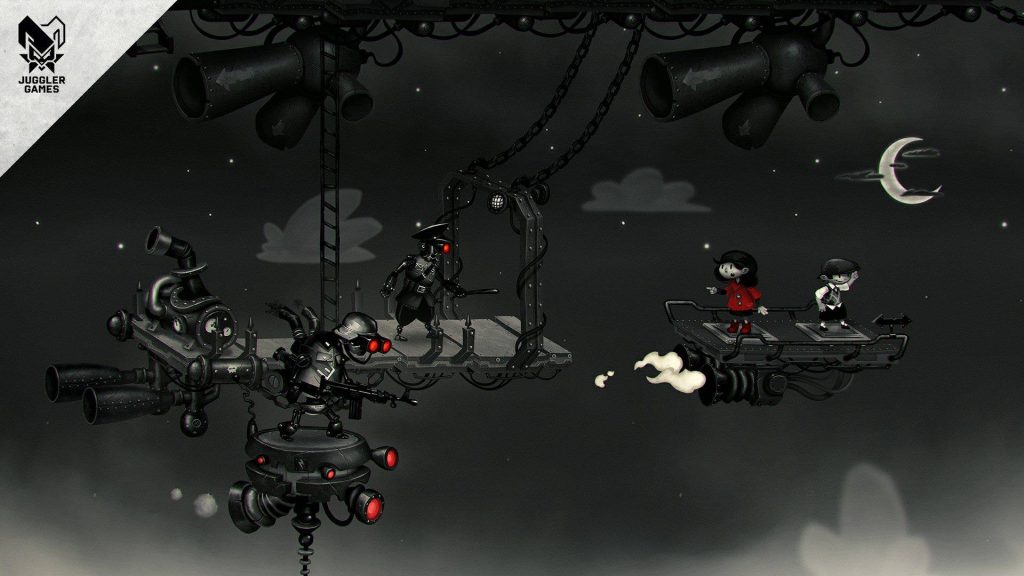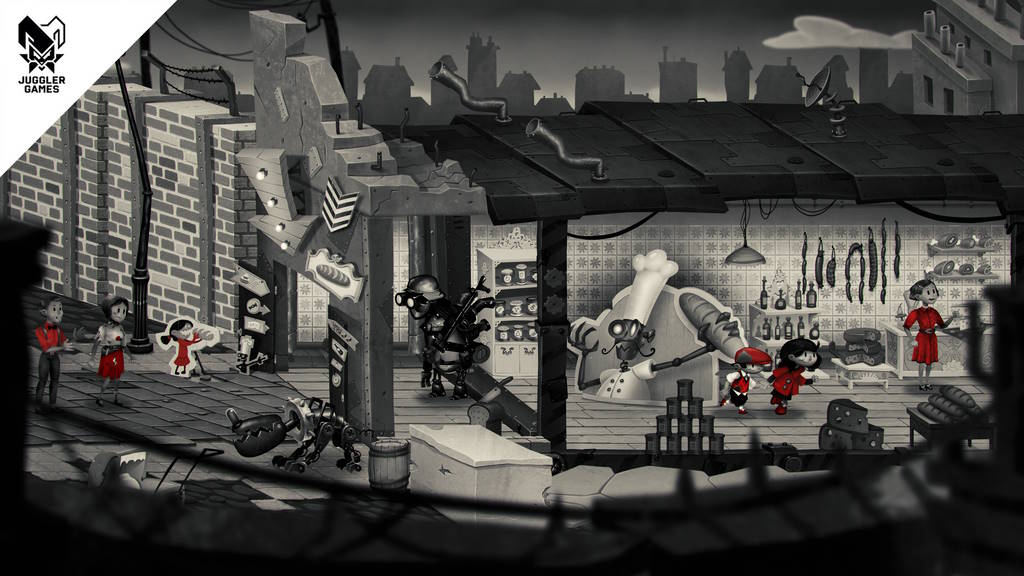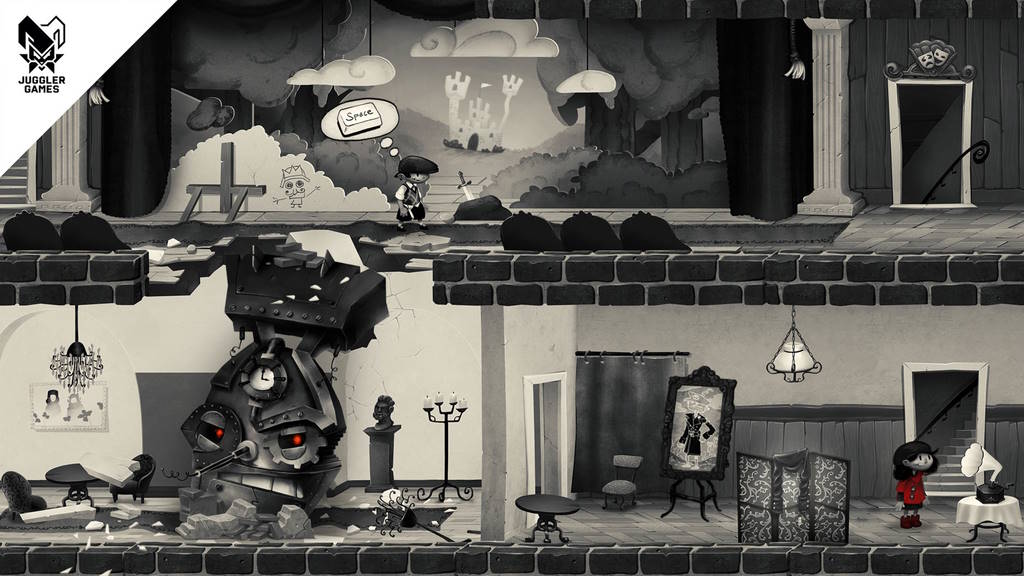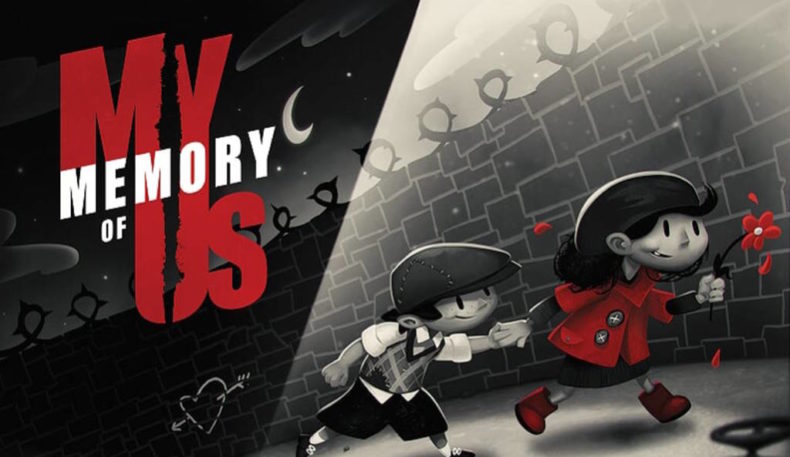October 9, 2018
Magic realism is a device often used to tell our most horrific tales. It has been used in movies such as Pan’s Labyrinth to tell the horrors of Franco influenced Spain and in Günter Gass’ nobel prize winning novel The Tin Drum about the rise of Nazismin Germany. My Memory of Us doesn’t reach anywhere near those heights, however, it uses the technique to tell an affecting tale of a young boy and girl whose friendship sees them struggling through the Nazi occupation of Poland during the Second World War.
The story is told by an elderly man, magnificently voiced by Mirfield’s finest – Patrick Stewart, recounting his childhood during the time the “Robot King” invaded and caused hardship and devastation to his community. It tells of his friendship with a girl, who like others of her type are singled out by the Robot King, covered in red paint, and moved to a ghetto in the city. Their friendship endures despite this and the game sees them working together to subvert the newly imposed will of the Robot King and his army, offering what little resistance two children can in the face of such horrors.

You control both the boy and the girl at different times as each has some unique features: the girl can run fast and uses a catapult, whereas the boy can sneak and uses a mirror to reflect light into people’s eyes to temporarily blind them. Sometimes the children are together and you can grab the hand of the one you aren’t controlling at the time and bring them with you, other times you will be separated and you will need to use each character to help the other one through particular obstacles. Progress is halted by a vast array of puzzles. Most of these utilise simple tricks such as tile puzzles where you move tiles around to form a picture, to simple numerical tasks, or even environmental puzzles that require you to observe your environment to find the solution. None are particularly challenging, however, there are a number of times where the solutions feel a little obtuse, or it isn’t entirely clear which direction you should be headed to collect an item for the solution.
Movement can be fairly clunky at times with actions such as climbing, or switching between characters feeling a little unresponsive, this creates a small amount of frustration during the middle to later parts of the game that feature chase sequences where each child needs to utilise their particular skill to enable both to escape. Frustration is further compounded as there isn’t a generous auto-save system, so if you fail towards the end of the chase sequence you will need to begin it all over again. These game-like elements do much to detract from the overall objective of the game, which is to highlight some of the horrors of this part of European history.

The visual style is a significant part of My Memory of Us, featuring a lovely 2D hand-drawn 1930s style animation. The colour palette is monochromatic with occasional sharp splashes of red that stand out starkly against the black and white of everything else. It has a cutesy aesthetic presumably to reflect the childlike innocence of the two protagonists that sometimes seems at odds a little with the subject matter. It’s weird, for example, seeing the children inanely smiling as members of their community are marked and dragged off to goodness knows where by the Robot King’s army.
There are some moments in My Memory of Us where there are some opportunities for the real nature of the story to shine through. There is a part early on in the game where the girl is painted in red and she is barred from boarding the train she rode only moments prior, and where she is laughed at by the people of the town who only the day before had cheered her on as she danced in the restaurant; there is even a part where the girl, bathed in her red identifier outfit is made to dance by the officers of the Robot King and is thrown a bone as a reward to really undermine her humanity. These scenarios could and do have some impact, but I felt largely this would depend on your mileage in processing the messaging in these scenes, especially as they tended to play out after a period of frustrating gameplay. Tonally, I felt a little that the cutesy animation style often was at odds with the underlying message of horror, so much so that it undermined it rather than reinforced it.

My Memory of Us is an admirable attempt to tell the story of the plight of the Jewish community in Warsaw at the outbreak of the Second World War. Hidden in the game are Memory cards that you can pick up and they feature facts about the time and real life individuals who are revered for their work in resisting the Nazi occupation. There is a card, for example, for Irena Sendler the Jewish humanitarian aid worker who smuggled and saved what is believed to have been 2,500 children from the horrors of the Jewish ghetto and the eventual movement to the concentration camps. The ghetto itself housed approximately 450,000 people in a tiny space where starvation and disease quickly spread, and the Polish people suffered the highest population to civilian death ratio of any Allied country with five million citizens exterminated by the Nazi regime. These are important, vital stories that need to be told over and over again and while My Memory of Us does valiantly attempt to do that, the elements that make this title a game tend to over-shadow those stories to the point that the essential message is lost a little somewhere.
Patrick Stewart
Beautiful art style
Noble attempt to tell a dark story
Clunky gameplay elements
Some obtuse puzzling/player direction
It feels trite to put a score on a game like Memory of Us as it tells an important and poignant story that should be heard, it's just that at times the game parts get in the way of that story.






